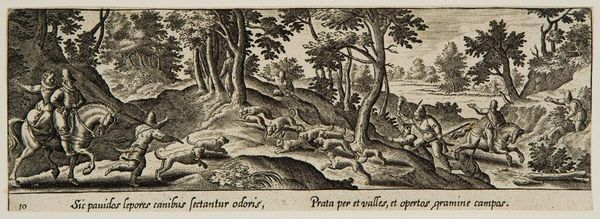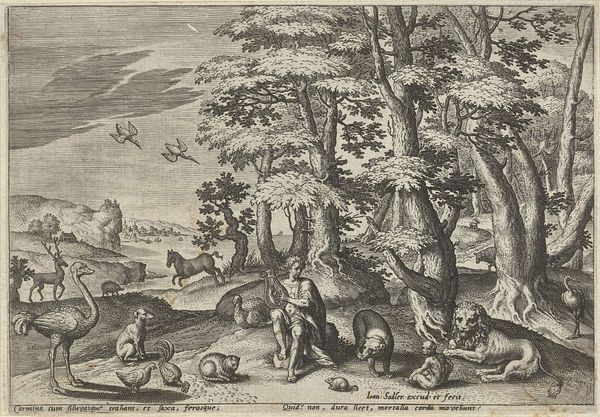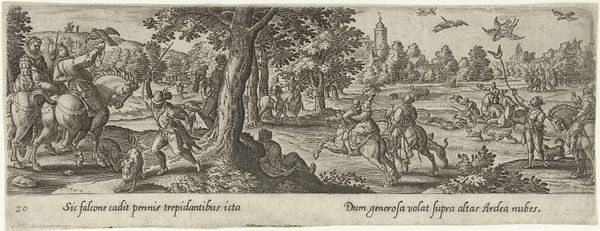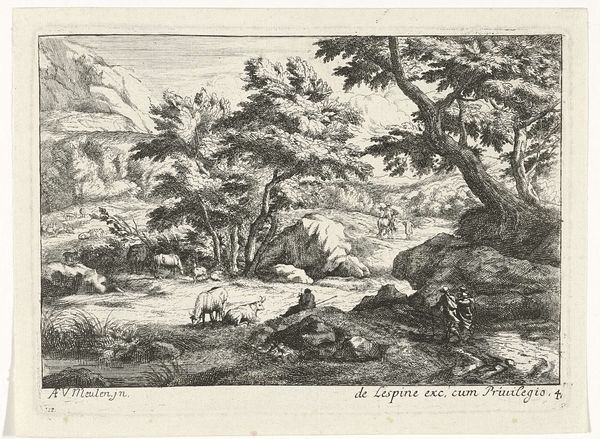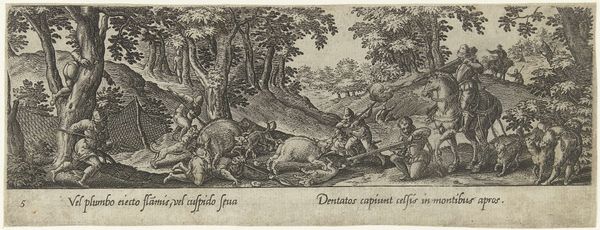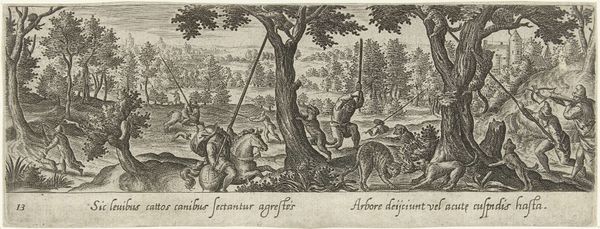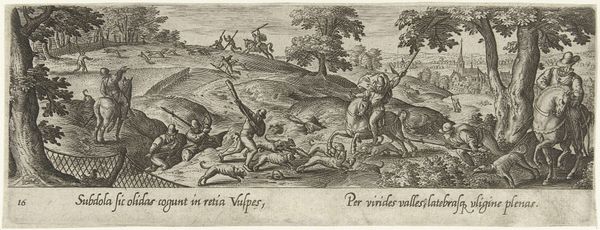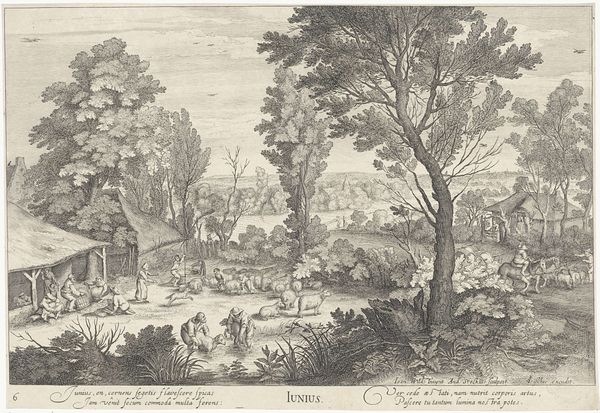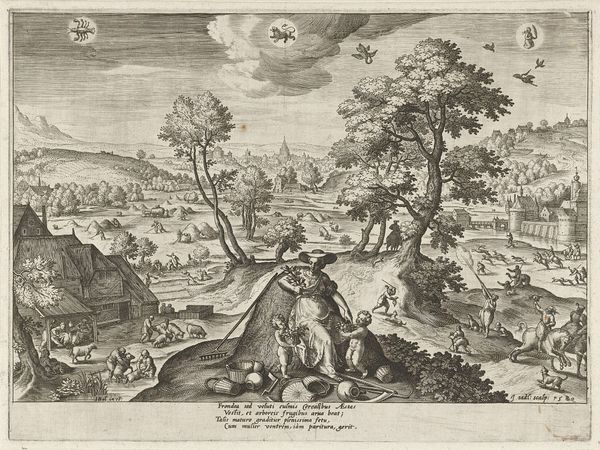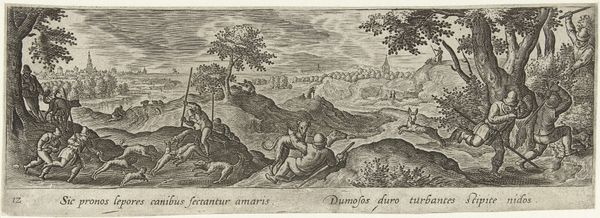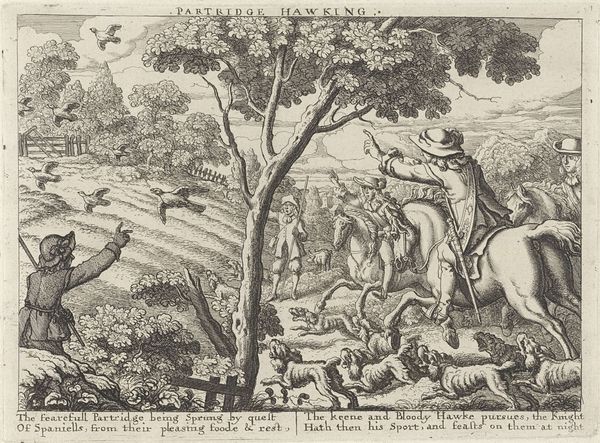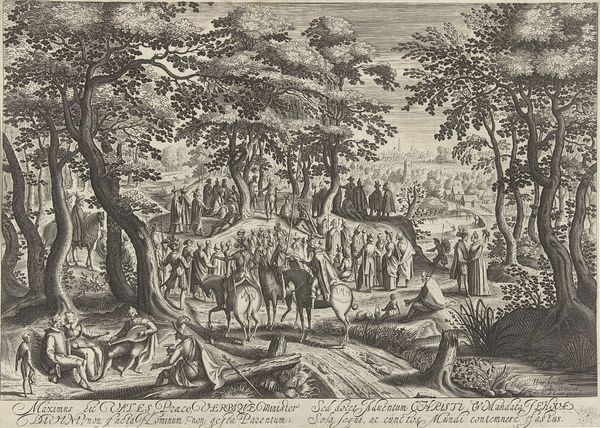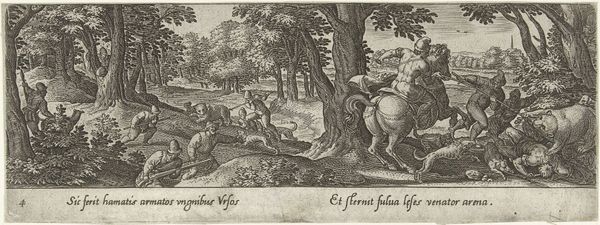
print, engraving
# print
#
landscape
#
mannerism
#
genre-painting
#
northern-renaissance
#
engraving
Dimensions: height 81 mm, width 215 mm
Copyright: Rijks Museum: Open Domain
Editor: We're looking at Philips Galle's "Hazenjacht," a print from between 1582 and 1633. It’s currently at the Rijksmuseum. My first thought is that this elaborate hunting scene seems almost frantic. All these figures, dogs, horses, hunters! What jumps out at you when you look at it? Curator: Well, that frantic quality you mention strikes me as part of its cultural memory. The hunt, especially for the elite, wasn’t just about acquiring food. It symbolized power, control, and the taming of nature. Note how the dogs, themselves symbols of domestication, are unleashed upon the "pauidos lepores" - the fearful hares. Editor: So the fear isn't just about the hares, but what the hares represent? Curator: Precisely! Consider the symbolic language. The hunters on horseback elevate themselves both physically and socially. Hunting imagery has appeared since the Palaeolithic era. Over time, especially within elite art circles, hunting represented virtuous ruling and social dominance. The details – the clothing, the posture – aren't accidental. How do you think those details amplify those notions? Editor: I guess, seeing them so dressed up while engaged in what is ostensibly a very raw, physical activity really drives home that idea of their separating themselves from the “natural order.” Curator: Exactly! And note how this imagery continues to echo through our art, consciously or not. The idea of taming nature. Consider our modern sporting events or even our interactions with technology. Don't they continue some part of the hunting ideal? Editor: That’s interesting. It gives me a lot to think about - like how our symbolic representations change... and don't change... over time! Thank you for unpacking this artwork and providing that fascinating context.
Comments
No comments
Be the first to comment and join the conversation on the ultimate creative platform.
